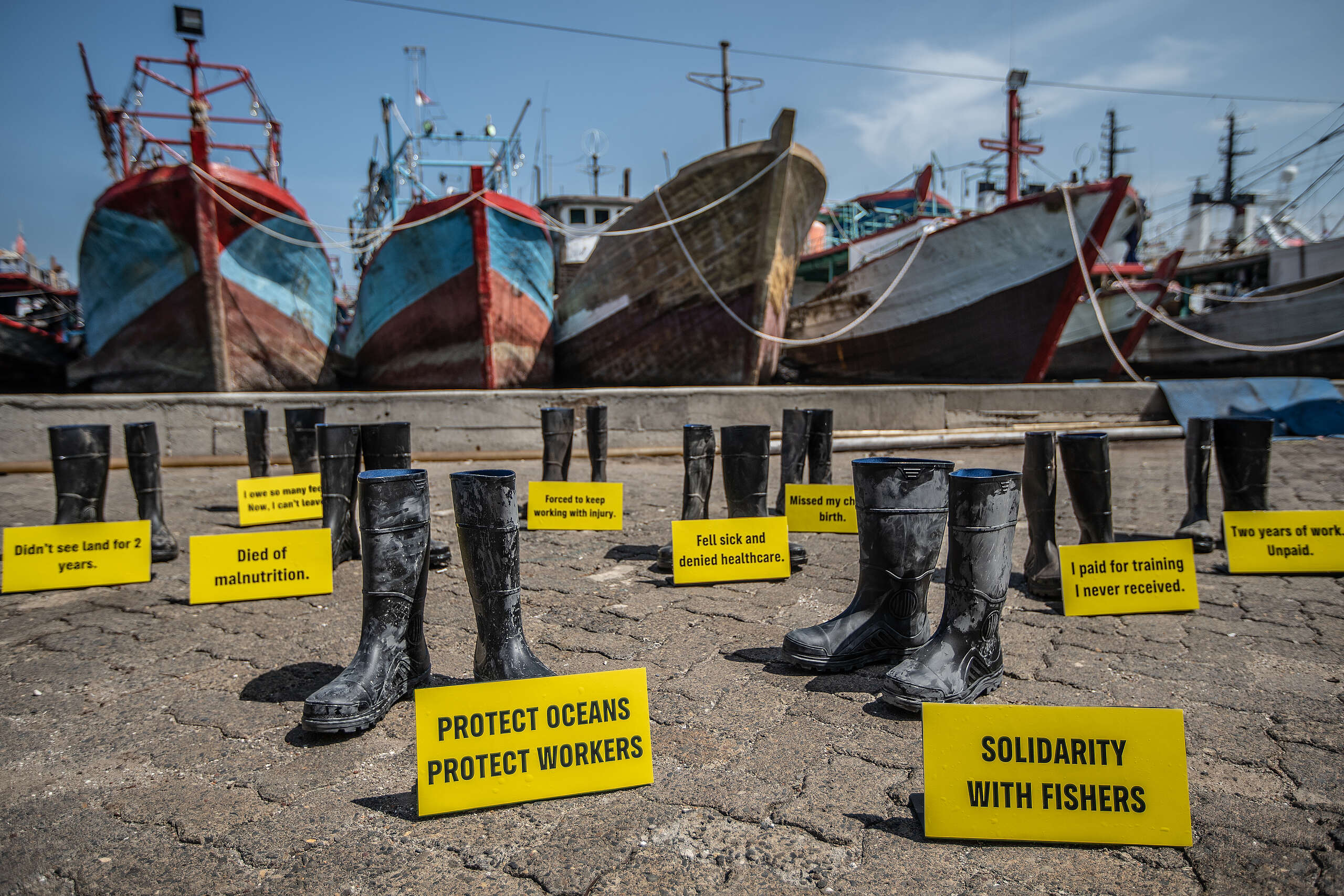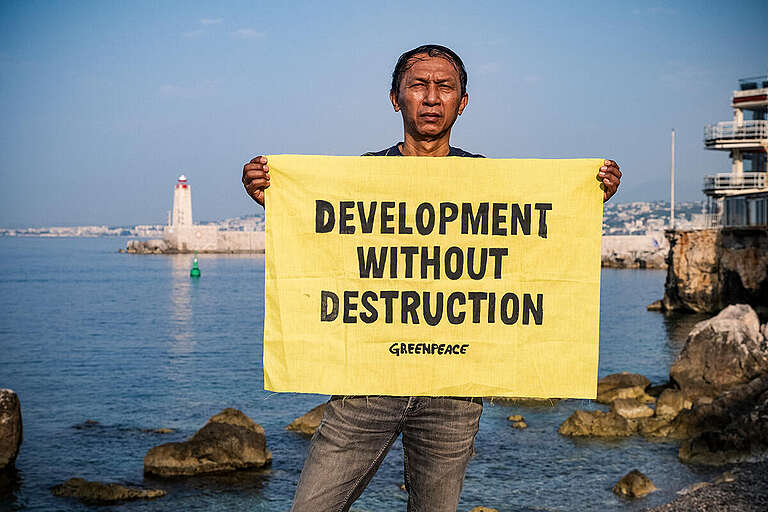Southern Thailand is standing at a crossroads between the government-led coastal industrial development plan which is expected to create jobs and the country’s economic growth against threats to coastal and small-scale fisher communities whose rights, livelihoods, and ecological knowledge would be lost. The proposed deep-sea ports to connect two seas – Andaman and the Gulf of Thailand – with a motorway and a dual-track railway titled “Land Bridge” are moving forward without genuine community consent, despite the fact that local fishers and Indigenous peoples will bear the brunt of its pollution and ecological devastation including irreversible seabed destruction.

Greenpeace Thailand supports the creation of “community seas”—community-led marine protected areas—along with the rights of small-scale fishers and coastal communities who are facing the impacts of the climate crisis, industrial pollution, destructive fisheries, and large-scale development projects.
If the project is approved to proceed, this would irreversibly damage some of Thailand’s most intact marine ecosystems. Ranong is home to the country’s largest mangrove forest known as the UNESCO-recognized Ranong Biosphere Reserve” which will be threatened by this project. That is why Greenpeace Thailand, together with community networks and marine researchers, launched a mission to document benthic species in the project area—collecting scientific evidence to challenge the government’s claim that this coastline is suitable for large-scale industrialization.
But this mission is more than science. It is a statement of power.
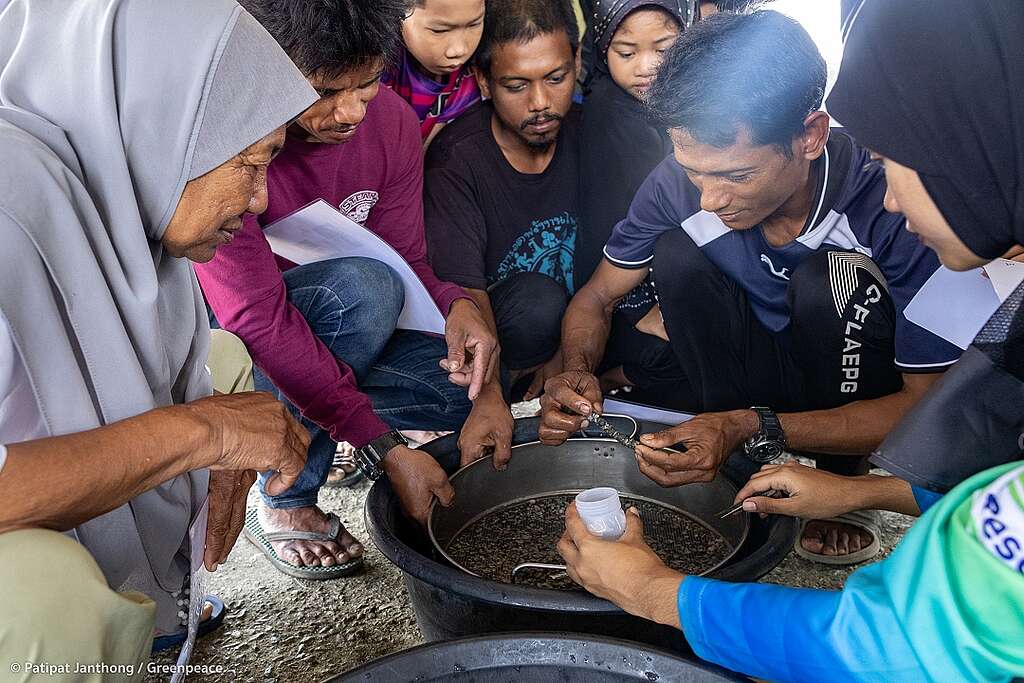
Local communities, Indigenous groups, students, and small-scale fishers came together to sort and identify benthic organisms from the collected samples—putting citizen science at the core of this marine research. Through this approach, they can see with their own eyes the diversity of life beneath their sea and affirm what they have always known: their seas are abundant, alive, and essential to their livelihoods, food security, and future.
Sakanun Plathong, the benthos research team lead, Prince of Songkhla University said:
“ At least 30 species of benthic animals were found in each sampling station. We’ll continue to analyze the sediment in the lab to uncover more microscopic species so that we will know the exact number of benthos species in each station. ”

He noted what they witnessed at sea:
“We saw a lot of coastal fishers working at the sea. Even though the seabed is just mud, life thrives—shrimp, shellfish, crabs, and fish are fed by these benthic organisms.”
Local Voices: ‘This Land and Sea Are Ours’

Tom Sinsuwan, a Thai diaspora and small-scale fisher in Ranong, joined the research team on the boat. Her message was clear:
“Our livelihoods come from the sea. If this project gets the green light, we will lose everything. Today’s research gives us evidence that our sea is truly abundant. The government must listen—and at the very least pause the project and confront the truth of what communities have been saying.”
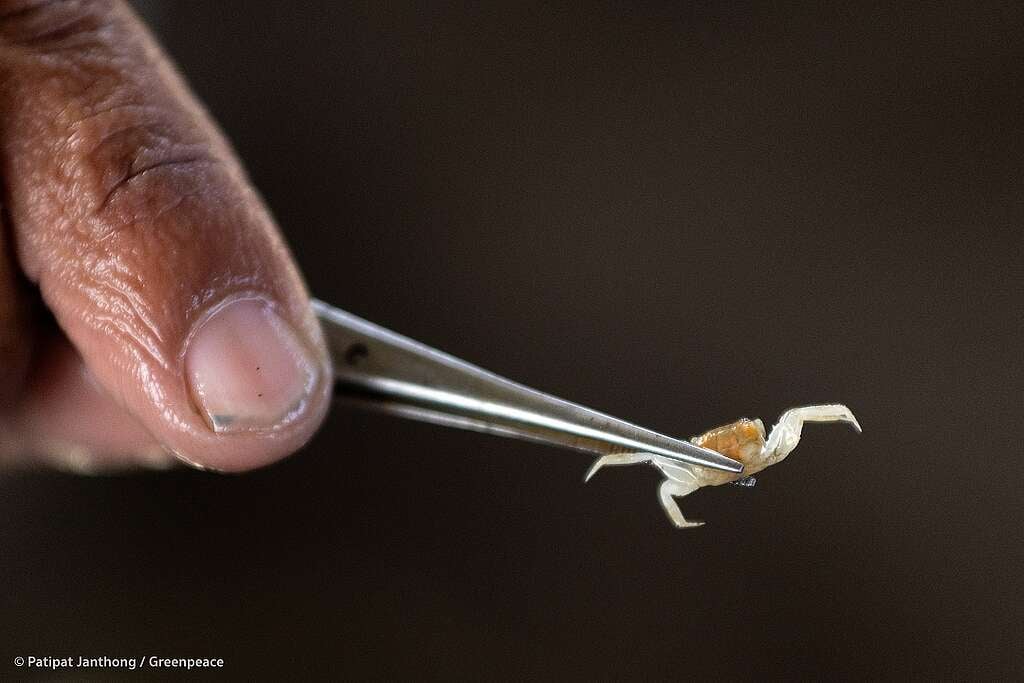
Another small-scale fisher in Ranong, Somkiat Manjit, also echoed his concerns after helping sort the samples:
“Don Ta Phaeo, an area identified by the local community as rich in marine life and may be affected by the deep-sea port project, is a biodiversity hotspot. Today, I learned about polychaetes, crustaceans—tiny creatures that sustain our fish, our shrimp, and our lives. If the government buries the sea here, we, small-scale fishers, will have no future. This place must remain abundant for our descendants.”
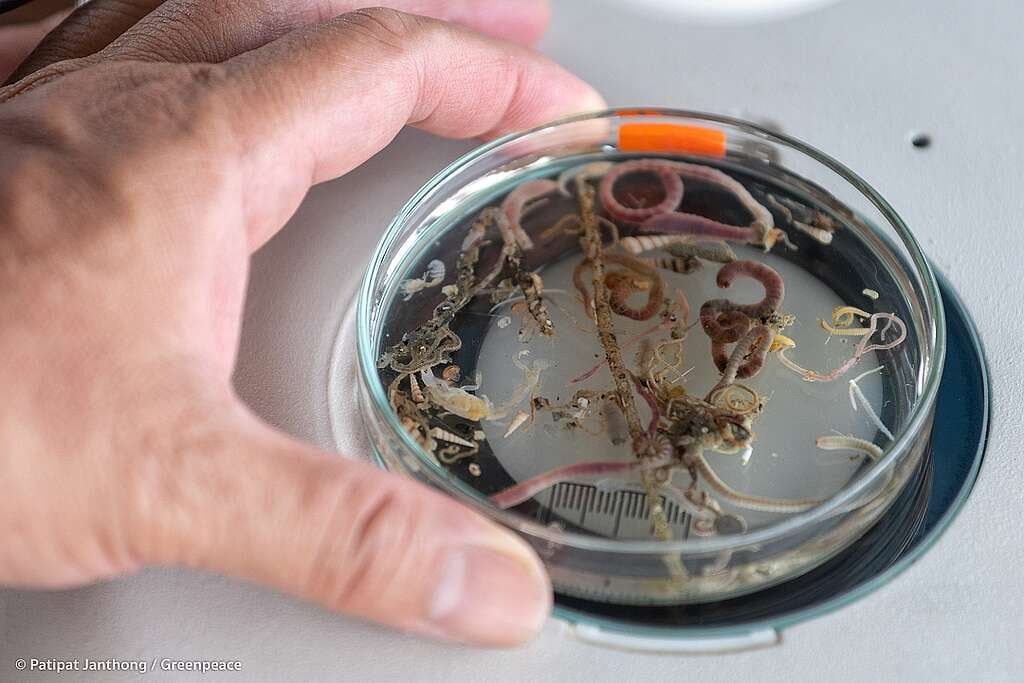
From Top-Down Development to Community Leadership
Kadesiree Thossaphonpaisan, Oceans Campaigner at Greenpeace Thailand, emphasized why the campaign centers on local communities:
“Citizen science emphasizes people’s participation. Local communities who rely on these ecosystems must have a leading role in decision-making. Coastal communities and Indigenous peoples have protected and sustainably used these resources for generations. They must not be excluded and be affected by top-down development.”
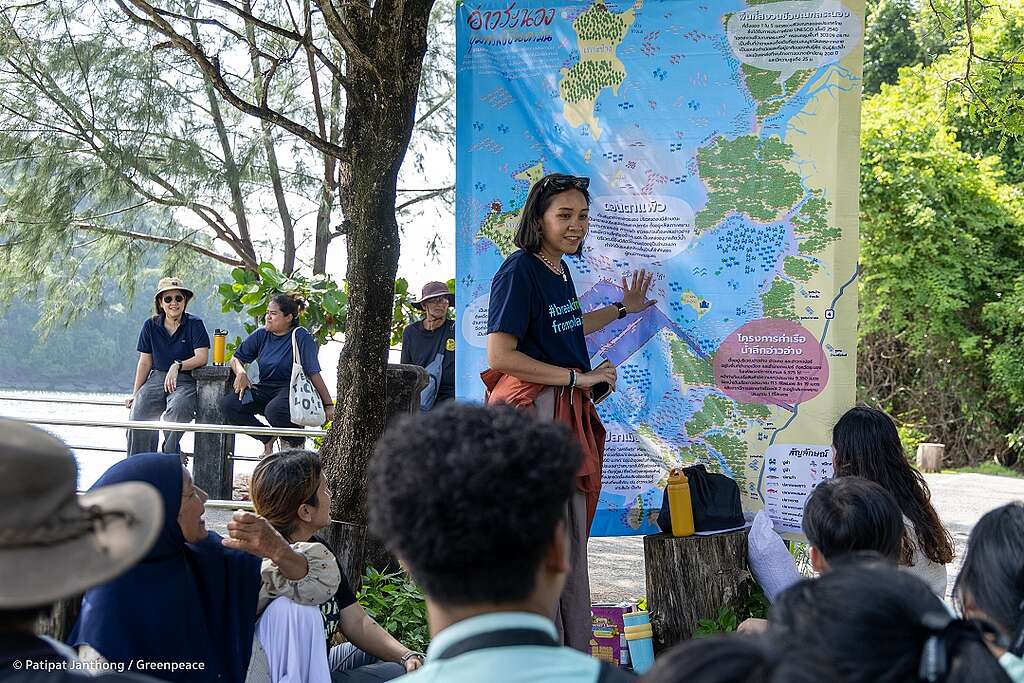
On the choice to document biodiversity at Don Ta Phaeo, she added:
“This underwater sand dune is a crucial fishing ground for small-scale fishers and the Moken people—yet it has never been officially recognized by the state, despite its importance. By using citizen science, we are proving what they have long known: this area is alive, valuable, and worth defending.”
Greenpeace Thailand calls on the Thai government—under its commitments to the Convention on Biological Diversity (CBD)—to respect the rights of Indigenous peoples and local communities, and genuinely implement Thailand’s national biodiversity strategies and action plans (NBSAP) to meet the fair and sustainable 30×30 target. This is impossible if frontline communities are excluded from decision-making processes.
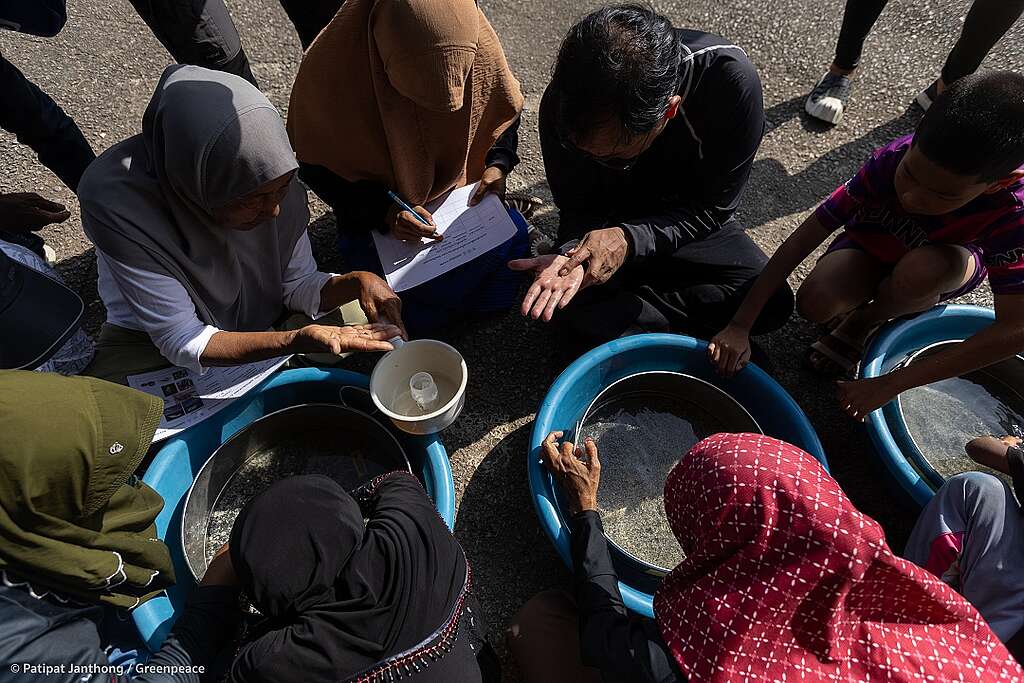
Join us in defending Thailand’s “community seas.” Stand with small-scale fishers and coastal and Indigenous communities to protect their rights, safeguard marine ecosystems, and stop destructive megaprojects before they erase the future of our coasts.
Supang Chatuchinda is a Digital Campaigner with Greenpeace Thailand.

